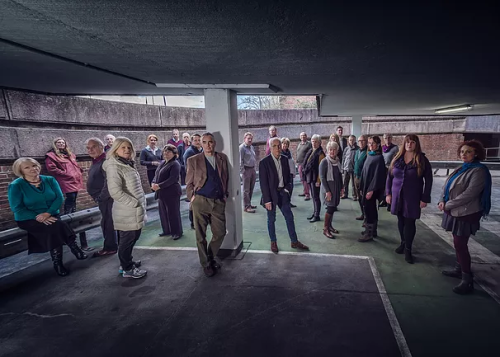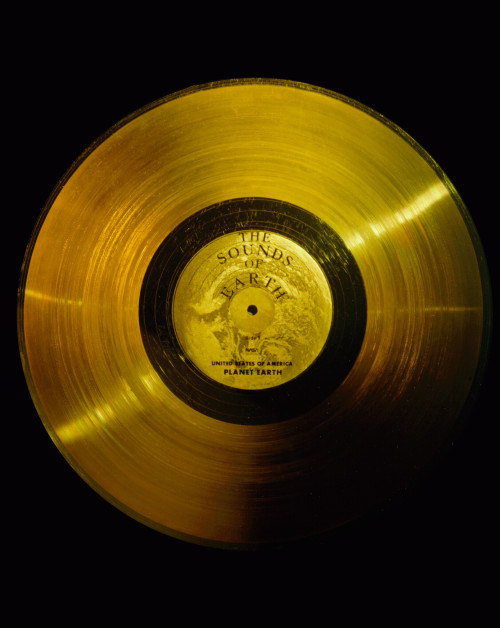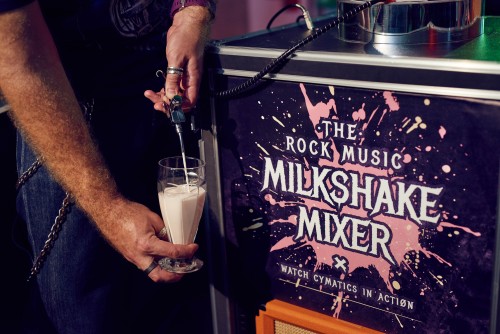Tag archives: music
A rockin’ good milkshake, a telescope that wants to be the next Taj Mahal
By Matin Durrani and Hamish Johnston
Film fans will well remember the opening scene from Back to the Future, in which Marty McFly (played by Michael J Fox) is thrown across a room by a massive sound wave from an enormous guitar amp. It’s more science fiction than science fact, but to illustrate the impact that sound can have on everyday life, staff at EngineeringUK have come up with something really rather clever. To drum up interest in next year’s science-careers show The Big Bang Fair, which is to be held in March in Birmingham, UK, they’ve built what they dub a “Rock Music Milkshake Mixer”.
View all posts by this author | View this author's profile
Reminiscing about Fermilab, CAPTCHA tests your physics, science of guitar strings
By Hamish Johnston
What do huge snowstorms, pioneering childcare and bison have in common? The answer is that they all feature in video recollections of Fermilab, the particle physics facility that is celebrating its 50th anniversary this year. A playlist of the videos is available and you can watch Cindy Joe’s musings over Snowpocalypse 2011 above.
According to physics blogger ZapperZ, the online retailer Amazon is developing a new CAPTCHA technology that relies on human’s innate understanding of the laws of physics. The idea, apparently, is that a user would be presented with before and after scenarios and asked which seem plausible. This could be a ball rolling down a ramp, or a projectile flying through the air. It seems that web robots can’t solve simple mechanics problems – at least for now.
Ending on a bright note, music technologist and erstwhile physicist Jonathan Kemp of the University of St Andrew’s in Scotland claims to have invented a revolutionary type of guitar string. He riffs on his new creation in the video above.
View all posts by this author | View this author's profile
The sounds of Saturn, dancing particles, distracted funding agency
By Hamish Johnston
Astronomy can be a highly visual science and therefore developing ways of sharing data with visually impaired colleagues – and the public – is an important challenge. Sound offers one way forward, as astrophysicist Wanda Diaz Merced explains in “The sounds of science”. Now, fellow astrophysicists Matt Russo and Dan Tamayo at the University of Toronto have converted the motions of the rings and moons of Saturn into two musical compositions. You can listen to a composition based on the orbital frequencies of moons and rings by playing the video above. The second piece is called “Resonances of Janus translated into music”.
View all posts by this author | View this author's profile
Indian independence, Doppler effect on a train, contagious science
By Michael Banks
This week India celebrated 70 years of independence. So what better way to mark the occasion than a music video? Step forward 20 or so scientists from the Indian Space Research Organisation (ISRO), who dub themselves the Rocket Band. Over the space of 18 months, they worked feverishly to create a seven-minute music video entitled “I am an Indian”. Mostly shot on the coast of the Arabian Sea, the video features the researchers walking along the beach as well as an animation of the Indian flag being put on the surface on the Moon. “We have a lot of talent in ISRO, making rockets comes naturally to many of us while making music is tough but it is not rocket science,” aerospace engineer Shiju G Thomas told NDTV.
View all posts by this author | View this author's profile
Einstein, Hawking and Rees set to music, singing about virtual particles, tiny satellite will soon blast off

Singing multiverse: the Salisbury Chamber Chorus. (Courtesy: Salisbury Chamber Chorus)
By Hamish Johnston
“What I wanted to write was something about the universe and our place in it: from the Big Bang, through our insignificance in the vastness of it all, our need for exploration and where space travel will take us, to the nature of light or the make-up of electrons, and finally ideas about multiverses and infinity.”
That is the motivation behind the “secular oratorio” Space Time Matter Energy by Simon McEnery, which premieres at St Mary le Strand Church in London on 10 June. The piece melds the words of famous physicists such as Stephen Hawking, Martin Rees and Albert Einstein with music and song from the Salisbury Chamber Chorus, the percussion ensemble Beaten Track and the pianist Peter Toye. If you can’t be in London on the 10th, there is also a performance in Salisbury on 17 June.
View all posts by this author | View this author's profile
Cat-chy quantum song, science TV resurrected, $800,000 textbook, desk traffic lights
By Sarah Tesh
I never realized it until now, but my life was missing a song about Schrödinger’s cat. Well, theoretical physicist, science writer and now singer/song writer Sabine Hossenfelder has come to the rescue with a song about quantum states. This is her second music video done in collaboration artists Apostolos Vasilidis and Timo Alho. The rather cat-chy tune not only includes lyrics about quantum entanglement, Boltzmann brains and the multiverse, but also fits in references to Star Trek and The Matrix. In her BackReaction blog, Hossenfelder says, “If you think this one’s heavy on the nerdism, wait for the next.” We’re looking forward to it!
View all posts by this author | View this author's profile
3D neutrinos on your phone, Hamiltonian: an Irish Musical, is a March for Science a good idea?
By Hamish Johnston
How would you like to explore a giant neutrino detector in 3D from the comfort of your mobile phone? VENu is a new smartphone app that allows you explore the physics underlying the MicroBooNE neutrino detector at Fermilab. Developed by Alistair McLean of New Mexico State University and an international team of physicists, the app is used in conjunction with the Google Cardboard headset to provide users with a virtual-reality experience of MicroBooNE. VENu includes games that offer “brain teasing challenges” including working out how to spot a neutrino event in a busy background of cosmic-ray events. The app can be downloaded free of charge from the Apple Store and the Google Android Marketplace.
View all posts by this author | View this author's profile
Create films with the sounds of space
By James Dacey
Last weekend I went to a Davie Bowie tribute night at a local pub in Bath. It was a fun evening – roughly a year since the artist passed away – where local musicians played classic tracks by Ziggy Stardust, the Thin White Duke and several of Bowie’s other alter egos. One of the more surreal moments of the night was when a man in a pink suit took to the stage to play what the band called his “spaceship” – producing a whirring, repetitive electronic sound that built up to a crescendo. For a few minutes we were transported into space, just as Bowie intended with many of his memorable songs.
View all posts by this author | View this author's profile
Chasing gravitational waves in song, physicists on Broadway, the ‘impossible space engine’ returns
By Hamish Johnston
These days anyone making a major breakthrough in physics is expected to follow-up with a cheesy music video. So give it up for The Mavericks and “Chasing the Waves”, which chronicles the quest to detect gravitational waves – which culminated in LIGO’s success earlier this year. I don’t much about this video, but it seems to have been filmed at the University of Glasgow, which is part of the LIGO collaboration.
View all posts by this author | View this author's profile
Music for aliens, Doctor Strange’s science adviser, the physics of Bob Dylan

Sounds of Earth: An original golden record. (Courtesy: NASA)
By Hamish Johnston
An online initiative to reissue Carl Sagan’s golden record, which was attached to NASA’s Voyager 1 and 2 craft, has so far raised a whopping $1.1m, smashing its $198,000 goal. The campaign was created in September by David Pescovitz, editor and managing partner at the technology news site Boing Boing, after teaming up with Timothy Daly from Amoeba Music in the US, who was the original producer of the record, as well as US graphic designer Lawrence Azerrad. The original LP, which was created in 1977, contains sounds of the Earth along with recorded greetings and a mix of music, and has been unobtainable for decades, having been available only on CD-ROM in the early 1990s. Now that the cash has been raised, the golden record will be released next year as an LP to mark the 40th anniversary of the Voyager launches. So how much will it set you back? It’s yours for only $98, what a bargain.
View all posts by this author | View this author's profile
